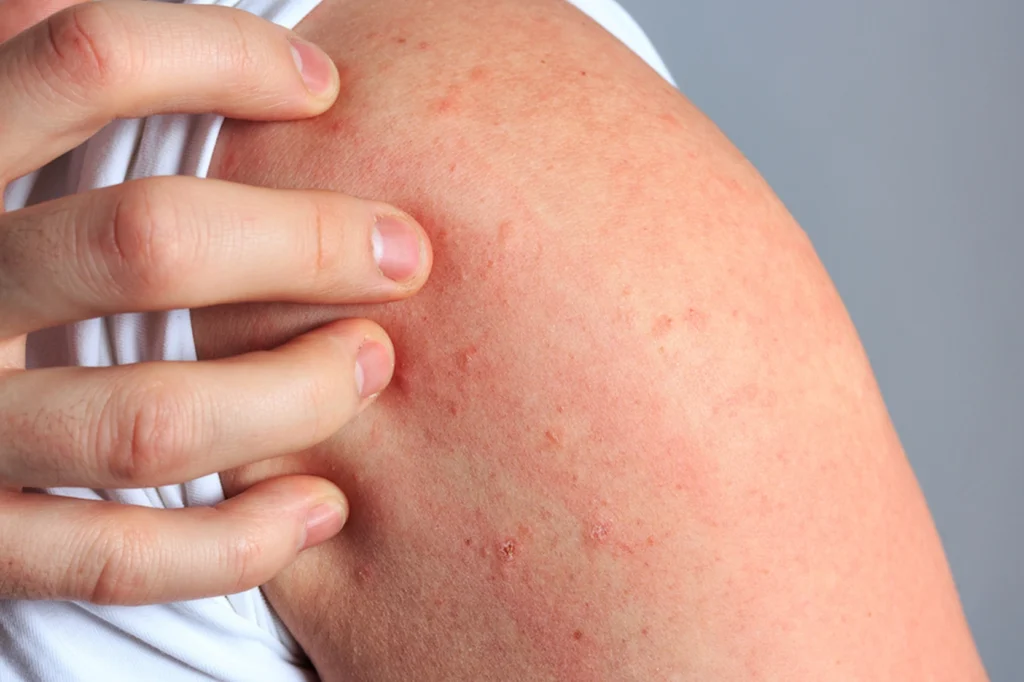Navigating Your Wellness Journey with Expert Care
“Embark on with Health”
Difference Between Orthorexia vs Anorexia and Revealing the Two Distinct Eating Disorders
HEALTH BLOG Difference Between Orthorexia vs Anorexia and Revealing the Two Distinct Eating Disorders Explore the variance between Orthorexia vs…
Is Blue Buffalo a Good Dog Food?
HEALTH BLOG Is Blue Buffalo a Good Dog Food? Wondering Is Blue Buffalo a Good Dog Food? Discover why Blue…
A Case Study Exploration of Prosopometamorphopsia (PMO): The Complexities of Facial Distortions
NEUROSCIENCE A Case Study Exploration of Prosopometamorphopsia (PMO): The Complexities of Facial Distortions Explore the in-depth case studies of Michael…
Is Hillshire Farm Smoked Sausage Good?
HEALTH BLOG Is Hillshire Farm Smoked Sausage Good? Discover the answer to "Is Hillshire Farm Smoked Sausage Good?" in our…
How Old Should You Be to Drink Powerade?
Learn about the drink's sugar content, absence of caffeine, and how it compares to other beverages like BodyArmor and Jack…
Auther's Pick
This procedure is very effective Hair Transplant Before and After
Understand FUE vs FUT, post-op care, common mistakes, and what…
RSV Vaccine During Pregnancy: Essential Protection for Your Newborn
HEALTH BLOG RSV Vaccine During Pregnancy: Essential Protection…
White Claw Alcohol Content: The Truth Behind the Popular Hard Seltzer
HEALTH BLOG White Claw Alcohol Content: The Truth…
Natural Remedies for Skin Care: The Best Ways to Achieve Healthy
Learn how to make DIY face masks, natural…
Follow US
Stanford Researchers Solve Epstein Barr Virus
Discover a comprehensive guide to Epstein Barr virus (EBV), explaining what it…
Most Read
Discover Categories
Latest Updates
Really Dave Coulier Diagnosed With Tongue Cancer
He is undergoing 35 targeted radiation sessions, with a strong prognosis over 90%…
Ruth Codd Recovering After Second Leg Amputation
With prosthetics on the horizon and a sense of optimism, Ruth’s decision highlights…
Coca Cola Cherry Bring Back With Iconic Soda Flavour
This revival reflects Coke’s strategy to leverage nostalgia while innovating its product line,…
A Man Sudden Death Due to Alpha Gal Syndrome
Drawing on recent UVA research including the first documented death this post explains…
Stanford Researchers Solve Epstein Barr Virus
Learn detection methods, symptoms, prevention tips and future outlook in plain, conversational language…
Hormone Replacement Therapy is Beneficial for Women
Written with expert insight and medical accuracy, this SEO-optimized post empowers women to…
Infant Botulism Formula Recall Everone Needs to Know
Understand the science behind infant botulism, why the recall was issued, and how…
Why Cholesterol medication atorvastatin recall 2025
As an experienced healthcare professional, I help you navigate the recall with practical…
Shake and Protein Powders Contain High Levels of Lead
Learn why these metals appear in protein powders, how to identify safe brands,…
How Old Should You Be to Drink Powerade?
Learn about the drink's sugar content, absence of caffeine, and how it compares…

Find Pregnancy Related Tips Blogs!
Infant Botulism Formula Recall Everone Needs to Know
In this detailed guide, a paediatric-healthcare professional explains the recent infant botulism…
Famous Conjoined Twins Abby and Brittany Hensel Age
Abby and Brittany Hensel are 35 years old in 2025, born on…
How to Identify Fibrocystic Breast Disease After Menopause
This detailed guide explains how to identify benign Fibrocystic Breast Disease After Menopause, when to seek medical help, and how lifestyle and hormone adjustments can improve breast health. With expert…
Is UTI a Sexually Transmitted Disease?
Wondering if a UTI is a sexually transmitted disease? The short answer:…
Really Dave Coulier Diagnosed With Tongue Cancer
Dave Coulier, famous for Full House, has revealed a new diagnosis: early-stage…
Ruth Codd Recovering After Second Leg Amputation
Ruth Codd, the Irish actress and social-media star, recently revealed she has…
Coca Cola Cherry Bring Back With Iconic Soda Flavour
This revival reflects Coke’s strategy to leverage nostalgia while innovating its product line, betting on long-term customer loyalty. Learn why this flavor comeback matters, how it's different this time, and…
A Man Sudden Death Due to Alpha Gal Syndrome
Alpha gal syndrome (AGS) is a growing tick-bite–induced allergy to mammalian meat…
Does Insurance Cover Therapy?
Understand in-network vs out-of-network coverage, common insurance terms, and resources for free…
Best Yoga Poses for Stress Relief: Find Your Inner Calm
With step-by-step instructions and breathing techniques, this guide helps you unwind and…
6 Natural Remedies for Anxiety: A Holistic Solutions
Discover the most effective natural remedies for anxiety to help you feel calmer and more in control. This comprehensive guide covers herbal solutions like chamomile and lavender, mindfulness practices, exercise tips,…
How Much Is the Average Asbestos Lawsuit Settlement Amount?
These settlements are a vital source of financial support for individuals suffering…



































